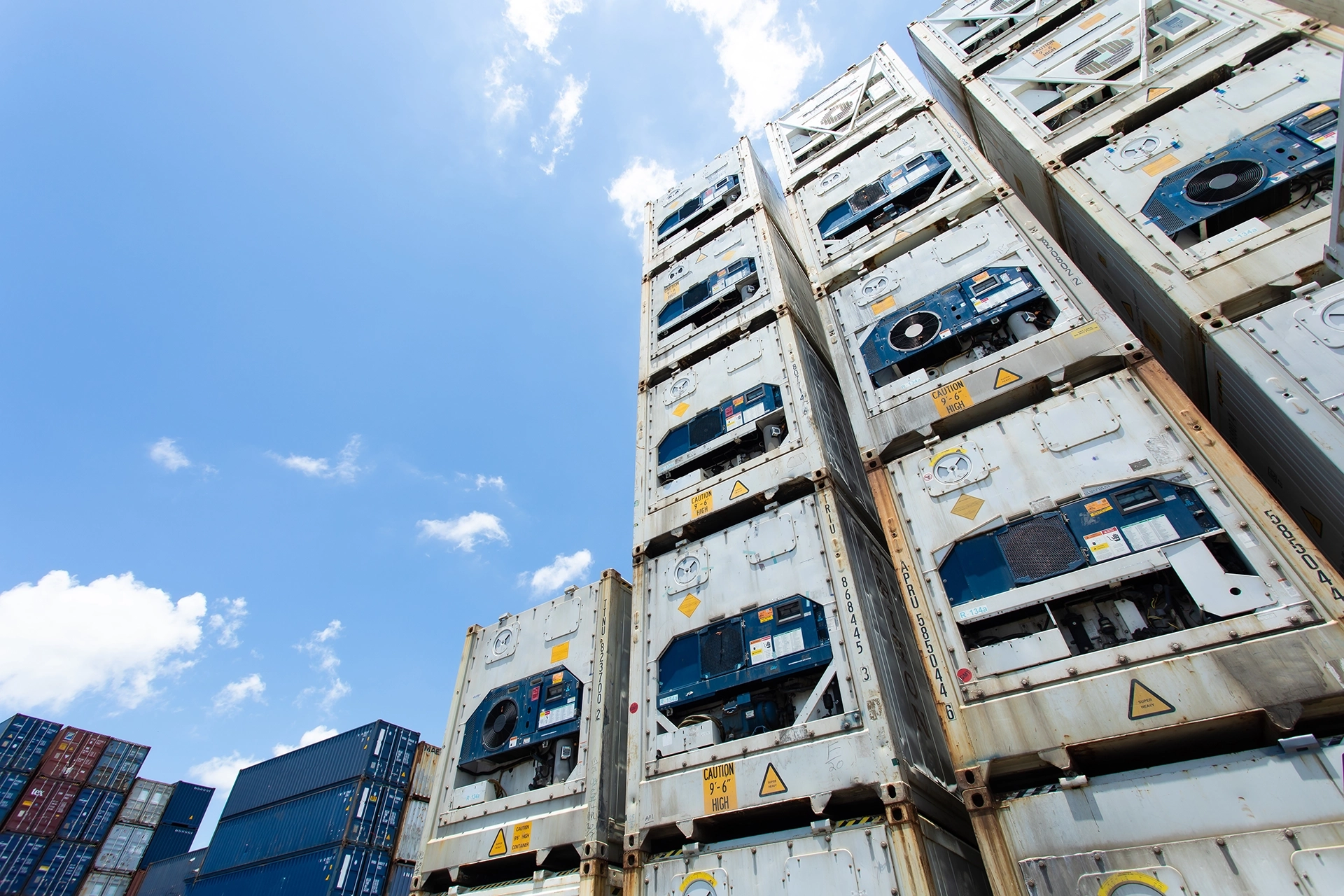
Refrigerated containers
Refrigerated containers are one of the specialised varieties of containers. Like their standard counterparts, they are metal structures in the shape of cuboids, usually available in lengths of 10, 20, 40 and 45 feet. Their main purpose is to store and transport goods, but in the case of refrigerated containers we are dealing with products that require special storage conditions, often even dependent on the duration of transport. These types of containers provide protection for the cargo from adverse weather conditions, such as precipitation, as well as protecting it from mechanical damage during transit and from spoilage of products, especially those that need to maintain a constant temperature.
Refrigerated containers allow to maintain the desired temperature inside, both negative and positive. They are widely used in the food, commercial, catering and medical sectors, among others, for transporting meat, vegetables, fruit, dairy products, flowers and laboratory samples. Thanks to their mobility, they can also act as portable cold stores, providing flexibility for seasonal operations.
The most essential component in a refrigerated container is its cooling system. Depending on the model, cooling units from companies such as Carrier, Starcool, Thermoking or Daikin are used. Once connected to the power supply, regardless of atmospheric conditions or climate zone, these units begin operation, guaranteeing that the desired temperature is reached and maintained between approximately -30°C and approximately +30°C. The cooling systems allow temperature and fan speed control. A voltage of 380V, a power of 10 kW and a current of 32A is required to power the refrigerated container systems.
Refrigerated containers are devices used, among others, in industry, therefore they must meet strictly defined standards. The PTI (Pre-Trip Inspection) certificate is one of the most important requirements. This procedure covers each refrigerated container and aims to check that it is suitable for loading and that the refrigeration system is working properly. Each unit also has a sticker indicating the date of the last inspection.
Types of refrigerated containers
“By choosing a Reefer refrigerated container, you gain additional storage space that can act as a mobile refrigerator or ensure stable thermal conditions during the transport of goods. Reefer container coolers are ready for use immediately after unloading. Simply connect the unit to a power source to maintain the required temperature between -30°C and +30°C. Depending on your preferences, renowned brands such as Carrier, Starcool, Thermoking or Daikin are used to cool the goods.”
Available in a variety of sizes, isothermal containers are the ideal solution for many industries, including food and floristry, providing optimum storage conditions for goods. The most popular sizes are 20'RF and 40'HCRF. Thanks to its insulating construction, placing goods inside an isothermal container allows protection from rapid temperature changes outside. Isothermal containers are often converted refrigerated containers and may not have operating refrigeration units. Nevertheless, their insulating properties make it possible to slow down the reaction of the goods to changing external conditions, which contributes to extending the shelf life of the products. They are therefore particularly useful for sensitive goods that require a constant temperature, especially in changing weather conditions.
Advantages of refrigerated containers:
Buy a container
Questions and answers: